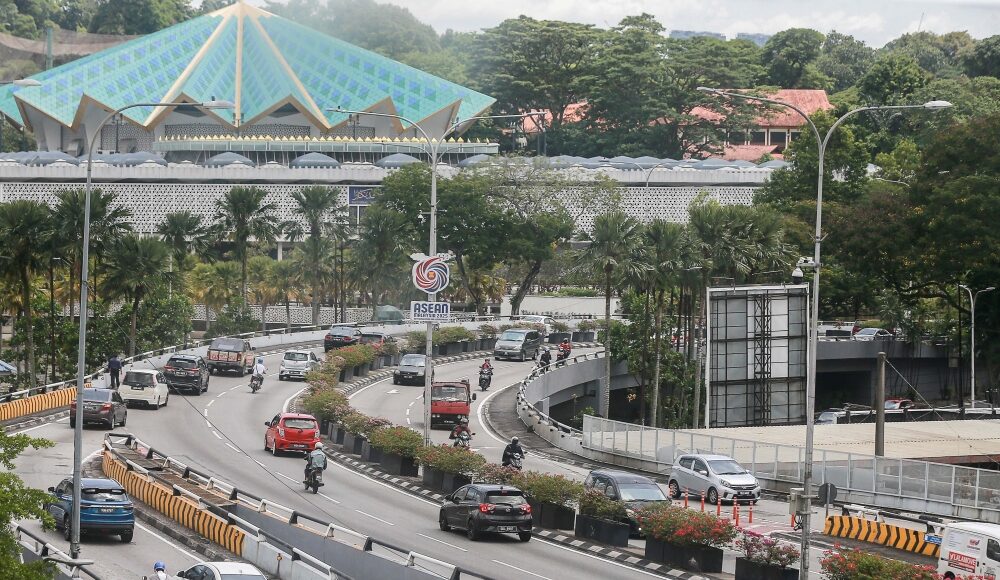MAY 24 — The inaugural Asean-GCC-China Summit due to be held in Kuala Lumpur on May 27 constitutes a new, innovative chapter in global politics. An exercise in inter-civilisational cooperation, the recognition of shared values, and the fostering of mutual respect, it represents a decisive break from existing narratives defined by Western imperialistic interests.
Concurrently, however, it also revives a longstanding tradition of Islamic-Confucian dialogue, one stretching back over a millennium, and in which Malaysia has consistently played a prominent role.
Beginning in the fifteenth century, Malaysia’s Melaka Sultanate, the linchpin of Islamic civilisation in the Malay world, formed a special relationship with China that allowed it to bridge the gap between the Middle Kingdom and the Islamic world.
Forming an important base for the famed voyages of Zheng He (1405-1433), each an expression of traditional Confucian values rooted in Muslim leadership, Melaka took the unprecedented step of sending three of its rulers to China in person.
Doing so fostered inter-civilisational understanding, economic cooperation, and strategic alignment. It also elevated Melaka into South-east Asia’s first great Islamic power.
This pattern of Islamic-Confucian dialogue did not begin, however, with Melaka and its sultans. Mirroring the policies of Malaysia’s current Prime Minister Anwar Ibrahim, they were merely continuing a longstanding tradition of civilisational respect traceable to the very beginnings of Islam.
The arrival of Islam in China
According to Chinese legend, in the year 651, the Tang Emperor Gaozong (r. 649-683) had a dream in which a monstrous entity attacked the imperial palace, shaking it to its foundations. Before it could be destroyed, however, a turbaned man dressed in green appeared and chased the demon away.
Awaking with a start, Gaozong promptly sought the council of his Interpreter of Dreams. Construing the devil to be an ill-omen, the Interpreter stated “the turbaned man is a Muslim from the west. In Arabia is a Muslim king of great virtue. A great sage [Muhammad] is born, with favourable omens.” To avoid the ill-fortune portended by the devil, Gaozong was advised to despatch an ambassador to Arabia, to bring the sage to China.
Although the appointed ambassador arrived in Arabia long after the Prophet’s demise, he was received hospitably by Caliph ‘Uthman, who responded to Gaozong’s request by dispatching a delegation of sahabah headed by Saad ibn Abi Waqqas (c. 595-674).
Upon arriving in China, Saad was ushered into the presence of Gaozong, who expressed his desire to learn about Islam. After listening to what Saad had to say, Gaozong was struck by Islam’s similarity to and compatibility with Confucianism; rather than seeing a rival, competing tradition, Gaozong perceived a shared set of values: loyalty to the sovereign, filial piety, and brotherly love.
Taking this common core as the basis for a lasting bond between the two civilisations, Gaozong allowed Saad to build China’s first mosque at Guangzhou – the still-extant Huaisheng mosque.
The uniting of Islamic and Confucian civilisation
As the centuries past, this early Muslim presence spread throughout China – and so, too, did Emperor Gaozong’s perception of Islam and Confucianism as two mutually affirming paradigms.
As early as 847, an Arab with the adopted Chinese name Li Yanshong became the first Muslim to pass China’s Imperial Examinations. Gaining the highest degree (jinshi), Li Yanshong’s contemporaries attributed his extensive knowledge of the Confucian classics to an abiding love of Chinese culture, an admiration that existed not despite Li Yanshong’s Muslim identity, but because of the profound confluence in values he thought it encouraged.
Unsurprisingly, Li Yanshong’s achievement was soon emulated by others.
The prominent Muslim Ma family, for example, which first arrived in China in 968, produced its first degree-holder in 1000; by the nineteenth century, thirty-one generations of this family had produced forty-four degree-holders, demonstrating a multigenerational commitment to Confucian learning in the context of Muslim identity.
This trend attained its fullest expression, however, within the seventeenth- to nineteenth-century Han Kitab tradition, an explicitly Islamic-Confucian form of scholarship that reached its epitome with Liu Zhi (1670-1739).
A Muslim trained in both traditional Chinese and classical Islamic thought, Liu Zhi considered Confucianism and Islam to be expressions of the same universal truth – theologically, they were one. He attributed this unity to a common source: applying the Chinese word sheng (sage) to both the Prophet Muhammad and Confucius, he argued that the latter had been a bearer of din al-fitrah, or the “natural religion” which the Quran claims underpinned the message of each prophet sent by Allah.
For Liu Zhi, Confucius had been the bearer of divine inspiration, whose teachings expressed the same fundamental truth as Islam.
On this basis, Liu Zhi and the other Han Kitab writers sought to fuse Chinese and Islamic civilizations into a mutually affirming ethical system rooted in a shared origin and moral consensus.
And neither did this go unnoticed within Confucian circles: in his preface to Liu Zhi’s biography of the Prophet, China’s Vice-Minister of the Board of Ritual wrote: “The ancient Confucian doctrine has been undermined at different times by Buddhists and Taoists…now, however, in this book of Liu Zhi we see once more the way of the ancient sages.”
A civilisational confluence
As the first Asean-GCC-China Summit rapidly approaches, underpinned by China’s commitment to a “shared future for mankind” and Asean’s belief in the values of mutual respect, non-interference, and shared prosperity, we are reminded of this long tradition of Islam-Confucian synergy, of admiration without domination.
The inaugural Asean-GCC-China Summit due to be held in Kuala Lumpur on May 27 constitutes a new, innovative chapter in global politics. — Picture by Sayuti Zainudin
A fourteenth-century Islamic inscription from Sianfu cites a famous Chinese proverb: “A thousand sages have but one mind, and through ten thousand ages only one truth holds.”
As China once again becomes a world power, and as Western nations decline amidst fervent nationalism, economic tribalism, and anti-Muslim rhetoric, Muslims need to re-recognize the existence of this “one truth” and forge new bonds based on shared history and a common future. As during centuries past, Malaysia will no doubt continue to sit at the heart of that endeavour, bridging both East and West Asia.
* This is the personal opinion of the writer or publication and does not necessarily represent the views of Malay Mail.





